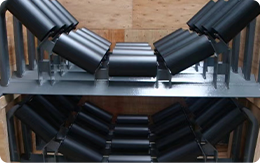 Afrikaans
Afrikaans  Albanian
Albanian  Amharic
Amharic  Arabic
Arabic  Armenian
Armenian  Azerbaijani
Azerbaijani  Basque
Basque  Belarusian
Belarusian  Bengali
Bengali  Bosnian
Bosnian  Bulgarian
Bulgarian  Catalan
Catalan  Cebuano
Cebuano  Corsican
Corsican  Croatian
Croatian  Czech
Czech  Danish
Danish  Dutch
Dutch  English
English  Esperanto
Esperanto  Estonian
Estonian  Finnish
Finnish  French
French  Frisian
Frisian  Galician
Galician  Georgian
Georgian  German
German  Greek
Greek  Gujarati
Gujarati  Haitian Creole
Haitian Creole  hausa
hausa  hawaiian
hawaiian  Hebrew
Hebrew  Hindi
Hindi  Miao
Miao  Hungarian
Hungarian  Icelandic
Icelandic  igbo
igbo  Indonesian
Indonesian  irish
irish  Italian
Italian  Japanese
Japanese  Javanese
Javanese  Kannada
Kannada  kazakh
kazakh  Khmer
Khmer  Rwandese
Rwandese  Korean
Korean  Kurdish
Kurdish  Kyrgyz
Kyrgyz  Lao
Lao  Latin
Latin  Latvian
Latvian  Lithuanian
Lithuanian  Luxembourgish
Luxembourgish  Macedonian
Macedonian  Malgashi
Malgashi  Malay
Malay  Malayalam
Malayalam  Maltese
Maltese  Maori
Maori  Marathi
Marathi  Mongolian
Mongolian  Myanmar
Myanmar  Nepali
Nepali  Norwegian
Norwegian  Norwegian
Norwegian  Occitan
Occitan  Pashto
Pashto  Persian
Persian  Polish
Polish  Portuguese
Portuguese  Punjabi
Punjabi  Romanian
Romanian  Russian
Russian  Samoan
Samoan  Scottish Gaelic
Scottish Gaelic  Serbian
Serbian  Sesotho
Sesotho  Shona
Shona  Sindhi
Sindhi  Sinhala
Sinhala  Slovak
Slovak  Slovenian
Slovenian  Somali
Somali  Spanish
Spanish  Sundanese
Sundanese  Swahili
Swahili  Swedish
Swedish  Tagalog
Tagalog  Tajik
Tajik  Tamil
Tamil  Tatar
Tatar  Telugu
Telugu  Thai
Thai  Turkish
Turkish  Turkmen
Turkmen  Ukrainian
Ukrainian  Urdu
Urdu  Uighur
Uighur  Uzbek
Uzbek  Vietnamese
Vietnamese  Welsh
Welsh  Bantu
Bantu  Yiddish
Yiddish  Yoruba
Yoruba  Zulu
Zulu idlers and rollers
Idlers and Rollers Essential Components in Mechanical Systems
In the world of mechanical engineering, the terms idlers and rollers refer to crucial components that significantly influence the efficiency and functionality of machines and systems. Understanding these elements is essential for engineers, designers, and technicians alike, as they play pivotal roles in various applications, from conveyor belts to machinery and even automotive systems.
What are Idlers and Rollers?
Idlers are components typically used in conveyor systems, acting as support for the belt or chain. They help guide the material being transported, ensuring that it moves smoothly and consistently along the defined path. Idlers can be either fixed or adjustable, depending on the application and specific design requirements.
Rollers, on the other hand, are cylindrical components designed to facilitate the movement of materials or equipment. They can be used in a variety of contexts, from transferring heavy loads in manufacturing to serving as the stabilizing part in the propulsion systems of vehicles. Rollers can be powered or unpowered, allowing them to adapt to different mechanical needs.
The Role of Idlers
Idlers serve multiple purposes in various mechanical setups. By reducing friction between the conveyor belt and the supporting structures, they not only extend the life of the belt but also improve energy efficiency. This reduction of friction minimizes the power needed to drive the system, leading to significant energy savings over time.
Moreover, idlers play a vital role in keeping the belt aligned. Misalignment can cause premature wear and tear, leading to costly downtimes. Regular maintenance of idlers is essential to ensure they are functioning properly, as they can become worn or damaged over time. Engineers often design idlers with replaceable components to facilitate easier maintenance and replacement.
idlers and rollers

The Importance of Rollers
Rollers, much like idlers, are key to maintaining efficiency in numerous mechanical systems. They facilitate the movement of goods and materials, reducing the need for manual handling and thereby minimizing labor costs. In manufacturing environments, the integration of rollers into assembly lines can enhance production speed and maintain a steady workflow.
Automotive applications also benefit from the use of rollers. In vehicles, rollers can be found in the drivetrain, assisting in transferring power from the engine to the wheels. Their design is pivotal for minimizing friction, which can lead to better fuel efficiency and overall performance.
Selection and Application
When it comes to selecting idlers and rollers, several factors must be considered, including load capacity, material, and environmental conditions. Different materials—such as plastic, rubber, and metal—offer various advantages, depending on the specific needs of the application. For example, plastic rollers may be lightweight and resistant to corrosion, while metal rollers are often chosen for their strength and durability.
Additionally, engineers must consider the operational environment. Exposure to extreme temperatures, moisture, or abrasive materials can affect the performance and longevity of idlers and rollers. Properly matched components will enhance the reliability and efficiency of the entire system.
Conclusion
Idlers and rollers are more than just passive components in mechanical systems; they are vital elements that enhance performance, ensure smooth operations, and ultimately contribute to the overall efficiency and longevity of machines. By investing in high-quality idlers and rollers and ensuring regular maintenance, industries can enjoy reduced operational costs and improved productivity. As technology advances, we can expect further innovations in the design and functionality of these essential components, paving the way for even more efficient mechanical systems in the future. Understanding their role and importance is crucial for anyone involved in engineering and design, highlighting the ongoing relevance of these mechanical heroes in our increasingly automated world.
-
Revolutionizing Conveyor Reliability with Advanced Rubber Lagging PulleysNewsJul.22,2025
-
Powering Precision and Durability with Expert Manufacturers of Conveyor ComponentsNewsJul.22,2025
-
Optimizing Conveyor Systems with Advanced Conveyor AccessoriesNewsJul.22,2025
-
Maximize Conveyor Efficiency with Quality Conveyor Idler PulleysNewsJul.22,2025
-
Future-Proof Your Conveyor System with High-Performance Polyurethane RollerNewsJul.22,2025
-
Driving Efficiency Forward with Quality Idlers and RollersNewsJul.22,2025





























